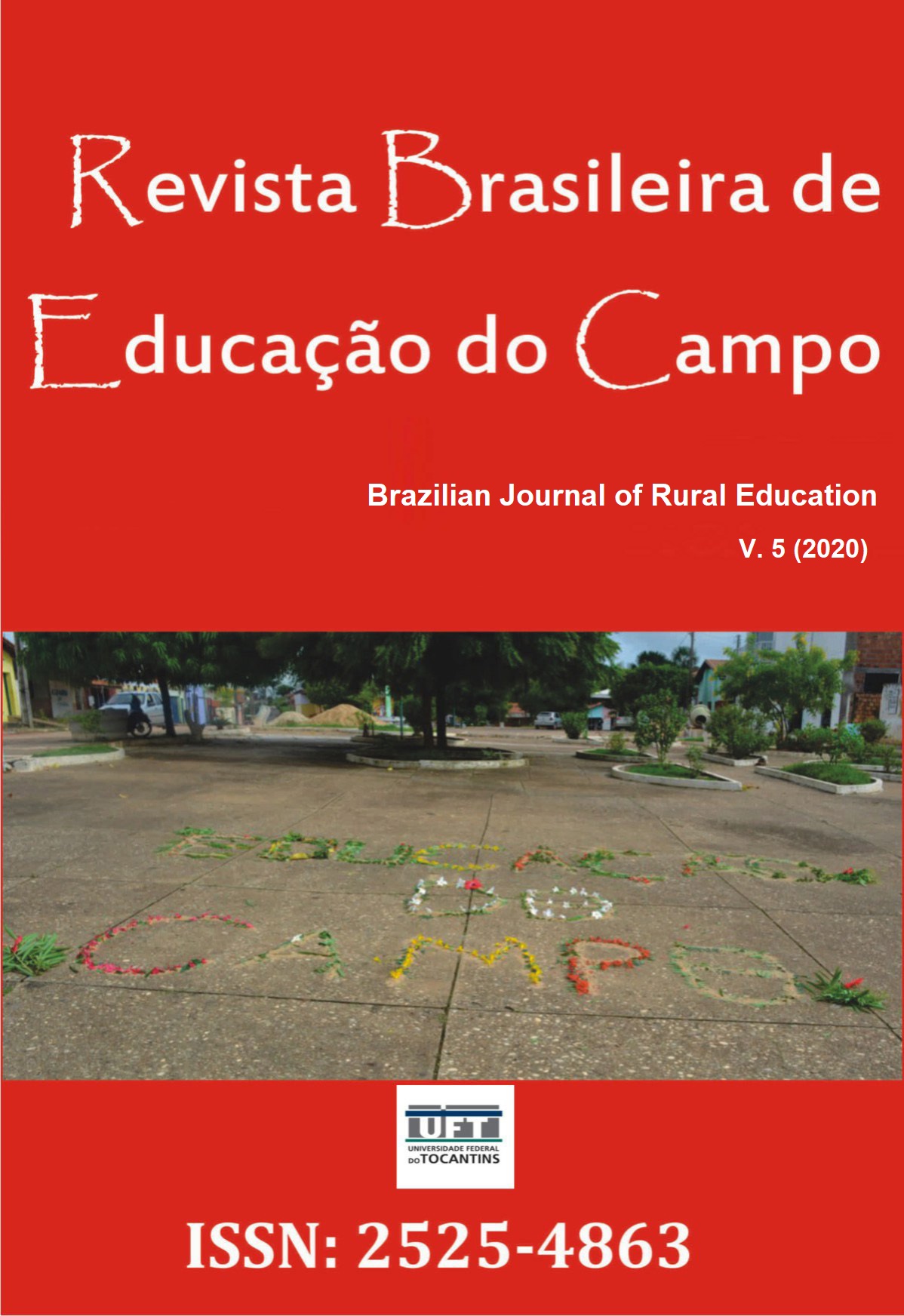Agricultural Family School: reflections about contributions to rural communities
DOI:
https://doi.org/10.20873/uft.rbec.e5756Abstract
ABSTRACT. In this article, we aim to analyze the field education project of the Escola Família Agrícola in the city of Veredinha (MG) and, from it, discuss the contributions to the subjects that make up the community; and, to contribute to the discussion about the role of geography teaching in rural education projects. The methodological procedures involve the realization of a specialization course monograph, including research and bibliographical study, document analysis and systematic observation. We indicate as contributions the capacity of mobilization and social organization of the farmers and the pedagogical alternation, which reverberate in the educational spaces and are consolidated with young people active in the region. EFAV contributes to the production of territories of resistance, with significant changes in regional dynamics. We conclude by pointing out that the EFAV was created to guarantee access to secondary and technical education for young people in the countryside, but it has advanced in a pedagogical and political proposal that meets the interests of the subjects in the countryside. To this end, it involved popular mobilization and also the articulation of different social organizations. The school itself mobilized educational and political processes that mobilized and raised awareness among communities and farmers.
Downloads
References
Acodefav. (2004). Estatuto Social – Associação Comunitária de Desenvolvimento Educacional, Familiar e Agropecuário de Veredinha. Veredinha, 13 de dezembro.
Arroyo, M. G., Caldart, R. S., & Molina, M. C. (Orgs.). (2009). Por Uma Educação Do Campo. Revista Vozes 4. Ed. Petrópolis, RJ.
David, C. (2010). O ensino de geografia nas escolas do campo: subsídios para uma prática integradora. In Matos, K. S. L. (Org.). Experiências e Diálogos em Educação do Campo (pp. 39-49). Fortaleza: Edições UFC.
Depoimentos do I Seminário dos V anos da Escola Família Agrícola de Veredinha. (2016). Mimeo: EFAV, Veredinha, MG.
Fernandes, B. M. (2008). Diretrizes de uma caminhada. Revista Vozes, Capítulo IV, 135-145.
Freire, P. (1998). Pedagogia da autonomia: saberes necessários à prática educativa. São Paulo: Paz e Terra.
Gimonet, J. C. (1999). Perfil, estatuto e funções dos monitores. In Pedagogia da Alternância e Desenvolvimento (pp. 124-131). Salvador: UNEFAB.
Gimonet, J. C. (2007). Praticar e compreender a Pedagogia da Alternância dos CEFFAS. Tradução de Thierry de Burghgrave. Petrópolis, RJ: Vozes.
Lei 9.394 de 20 de dezembro de 1996 (1996, 20 de dezembro). Lei de Diretrizes e Bases da Educação Nacional - LDB, que estabelece as diretrizes e bases da educação nacional. Recuperado de: http://www.planalto.gov.br/ccivil_03/leis/l9394.htm em 07/08/2019.
Marcos, V. (2006). Trabalho de Campo em Geografia: Reflexões sobre uma Experiência de Pesquisa Participante. Boletim Paulista de Geografia, 84, 105-136.
Nascimento, C. G. (2005). A educação camponesa como espaço de resistência e recriação da cultura: um estudo sobre as concepções e práticas educativas da escola família agrícola de Goiás – EFAGO (Dissertação de Mestrado). Universidade Estadual de Campinas, Campinas.
Planejamento Anual de Geografia da EFAV. (2016). Ensino Médio/Profissional. Monitora responsável Adriana Rodrigues da Silva. Veredinha – MG. [Mimeo].
Plano de Formação – PF (2010). Escola Família Agrícola de Veredinha – EFAV. Veredinha, MG.
Projeto Político Pedagógico - PPP (2010). Escola Família Agrícola de Veredinha – EFAV. Veredinha, MG.
Regimento Escolar. (2010). Escola Família Agrícola de Veredinha - EFAV. Veredinha, MG.
Resolução SEE nº 2820, de 11 de dezembro de 2015. (2015, 11 de dezembro). Diretrizes da Educação do Campo do Estado de Minas Gerais/Governo do Estado de Minas Gerais - Secretaria de Educação, Comissão Permanente de Educação do Campo. 38p. Recuperado de: http://www2.educacao.mg.gov.br/images/documentos/Diretrizes%20da%20Educa%C3%A7%C3%A3o%20do%20Campo%20do%20Estado%20de%20Minas%20Gerais.pdf em 07/08/2019.
Souza, C. J. O., Faria, F. S. R., & Neves, M. P. (2007). Trabalho de campo, por que fazê-lo? Reflexões à luz de documentos legais e de práticas acadêmicas com as geociências. Anais VII Simpósio Nacional de Geomorfologia. Belo Horizonte.
União Nacional das Escolas Família Agrícola do Brasil – UNEFAB. (1999). Pedagogia da Alternância – Alternância e Desenvolvimento. Primeiro Seminário Internacional. Salvador: Ed. Duplica Gráfica.
______________. (2005). Brasília: União Nacional das Escolas Famílias Agrícolas do Brasil. Revista da Formação por Alternância, 1(2).
Published
How to Cite
Issue
Section
License
Proposal for Copyright Notice Creative Commons
1. Policy Proposal to Open Access Journals
Authors who publish with this journal agree to the following terms:
A. Authors retain copyright and grant the journal right of first publication with the work simultaneously licensed under the Creative Commons Attribution License that allows sharing the work with recognition of its initial publication in this journal.
B. Authors are able to take on additional contracts separately, non-exclusive distribution of the version of the paper published in this journal (ex .: publish in institutional repository or as a book), with an acknowledgment of its initial publication in this journal.
C. Authors are permitted and encouraged to post their work online (eg .: in institutional repositories or on their website) at any point before or during the editorial process, as it can lead to productive exchanges, as well as increase the impact and the citation of published work (See the Effect of Open Access).















